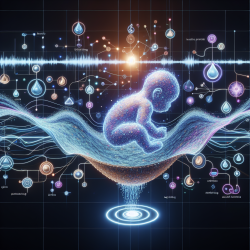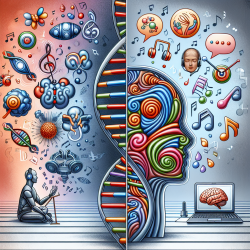Introduction
In the realm of speech-language pathology, the ability to decode infant cries offers a revolutionary pathway to early diagnosis and intervention for life-threatening conditions. The recent study titled "Infant Cry Signal Diagnostic System Using Deep Learning and Fused Features" unveils a groundbreaking approach to interpreting infant cries using deep learning and audio signal processing. This innovative system promises to enhance the accuracy and speed of diagnosing critical neonatal conditions such as respiratory distress syndrome (RDS) and sepsis, both of which have high mortality rates.
The Significance of Early Diagnosis
Early diagnosis is paramount in pediatric healthcare. Infants, unable to verbalize their symptoms, rely heavily on crying as their primary means of communication. By analyzing these cries, healthcare professionals can gain insights into underlying health issues. The study leverages deep learning algorithms to interpret cry audio signals, offering a non-invasive, efficient, and potentially life-saving diagnostic tool.
Research Methodology
The study utilized a dataset of labeled audio signals from infants diagnosed with specific pathologies. The researchers employed a combination of audio domain features, including the harmonic ratio (HR), Gammatone frequency cepstral coefficients (GFCCs), and spectrogram images. These features were processed using a convolutional neural network (CNN) model to enhance classification accuracy.
By integrating these features through a deep learning model, the system achieved a classification accuracy of 97.50%. This high accuracy underscores the potential of using fused audio features to distinguish between different infant pathologies, including RDS, sepsis, and healthy conditions.
Implications for Practitioners
For practitioners in speech-language pathology and related fields, the findings of this study highlight the importance of incorporating advanced machine learning techniques into diagnostic practices. By adopting this system, practitioners can improve diagnostic accuracy and provide timely interventions, ultimately enhancing patient outcomes.
Moreover, the study encourages further exploration into the use of deep learning models for analyzing infant cries. Practitioners are urged to consider the potential of integrating such technologies into their practice, thereby staying at the forefront of medical innovation.
Encouraging Further Research
While the study presents promising results, it also opens avenues for further research. Future studies could explore the integration of additional audio features or demographic data to refine the diagnostic model. Additionally, expanding the dataset to include a broader range of pathologies could enhance the system's applicability and accuracy.
Conclusion
The "Infant Cry Signal Diagnostic System Using Deep Learning and Fused Features" represents a significant advancement in neonatal healthcare. By harnessing the power of deep learning and audio signal processing, this system offers a new frontier in early diagnosis and intervention. Practitioners are encouraged to embrace these technological advancements to improve diagnostic accuracy and patient outcomes.
To read the original research paper, please follow this link: Infant Cry Signal Diagnostic System Using Deep Learning and Fused Features.










